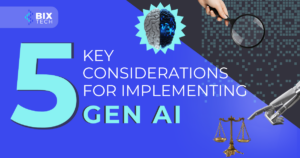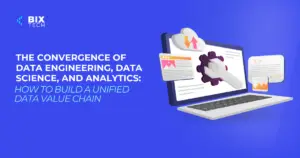10 Things You Need to Know About Data Analysis: The Key to Smarter Business Decisions

Sales Development Representative and excited about connecting people
In today’s data-driven world, data analysis is no longer just a technical skill reserved for analysts and scientists—it’s an essential capability for anyone making strategic decisions. Whether you’re a business leader, entrepreneur, or curious professional, understanding the fundamentals of data analysis can help you unlock new opportunities, minimize risks, and steer your company toward success.
But what exactly is data analysis, and why does it matter so much? In this comprehensive guide, we’ll walk you through the 10 most important things you need to know about data analysis, sharing practical tips, real-world examples, and actionable advice to help you make the most of your organization’s data.
1. Data Analysis is More Than Just Numbers
When people hear “data analysis,” they often picture endless spreadsheets and complex charts. While numbers are certainly a part of it, data analysis is really about extracting insights that drive action. It’s the process of collecting, cleaning, examining, and interpreting data to answer questions or solve business problems.
For example, a retailer might analyze sales data to identify which products are trending, while an HR manager could use employee data to boost retention. The key is to translate raw data into meaningful stories that inform decisions.
2. Clean Data is the Foundation
Before you can analyze anything, you need reliable, accurate data. Data cleaning—removing duplicates, fixing errors, and filling in missing values—is a crucial step that’s often underestimated. Poor-quality data leads to misleading results and wasted efforts.
Think of it this way: Just as a chef starts with fresh ingredients, a data analyst needs clean data to “cook up” valuable insights. Investing in robust data governance and cleaning practices pays off in more accurate, trustworthy analysis.
3. There Are Many Types of Data Analysis
Not all data analysis is created equal. Depending on your goals, you might use:
- Descriptive analysis: What happened? (e.g., last month’s sales)
- Diagnostic analysis: Why did it happen? (e.g., identifying a sales dip cause)
- Predictive analysis: What’s likely to happen? (e.g., forecasting sales for next quarter)
- Prescriptive analysis: What should we do? (e.g., recommending a pricing strategy)
Understanding these categories helps you choose the right approach for your business questions. If you want to dive deeper into how predictive analytics can shape your strategy, check out Crafting Tomorrow’s Strategies with Predictive Analytics.
4. Tools and Technologies Matter—But Mindset is Key
From Excel to Python, Power BI to Tableau, there’s no shortage of powerful tools for data analysis. However, the most important “tool” is a curious, analytical mindset that constantly asks, “Why is this happening?” and “What can we learn from this?”
Choosing the right software depends on your team’s skillset, data volume, and business needs. But remember, technology should simplify the path to insight—not complicate it.
5. Visualization Brings Data to Life
A well-crafted chart can be worth a thousand rows of data. Data visualization transforms complex datasets into clear, compelling visuals that highlight trends, outliers, and key findings. This makes it much easier for teams and leadership to grasp the story behind the numbers and make informed decisions.
Dashboards, charts, and interactive reports have become staples in modern organizations. Want to learn more about the value of visualization and business intelligence? Don’t miss our guide on Business Intelligence: Transforming Data into Strategic Insights.
6. Data Analysis Drives Better Decisions
At its core, the main goal of data analysis is to support smarter, evidence-based decisions. By turning observations into actionable recommendations, organizations can improve efficiency, reduce costs, and discover new growth opportunities.
For instance, analyzing customer feedback may reveal a product flaw, enabling you to fix it before it impacts your reputation. Or, a data-driven marketing campaign can double your ROI compared to gut-feeling approaches.
7. Privacy and Ethics Should Never Be Overlooked
With great data comes great responsibility. As companies collect more information, it’s critical to handle data ethically and comply with regulations like GDPR and CCPA. This includes securing personal data, being transparent about usage, and respecting user preferences.
Failing to prioritize data privacy and ethics can lead to legal trouble and loss of customer trust. To stay ahead, adopt clear data governance policies and keep your team educated about best practices.
8. Collaboration is Crucial
Data analysis isn’t a solo sport. Successful projects require input from multiple departments—IT, operations, marketing, finance, and beyond. Subject matter experts provide context, while data professionals bring technical know-how.
Encouraging collaboration breaks down data silos and ensures analyses are both accurate and relevant. Regular communication between teams helps clarify goals, avoid misunderstandings, and deliver more impactful outcomes.
9. Continuous Learning is Required
The field of data analysis evolves rapidly, with new tools, techniques, and regulations emerging every year. Staying current means committing to lifelong learning—whether through online courses, workshops, or reading industry blogs.
Encourage your team to experiment with new methods, question assumptions, and keep up with trends. The most successful organizations are those that treat data analysis as an ongoing journey, not a one-time project.
10. Every Business Can Benefit—No Matter the Size
Finally, you don’t have to be a tech giant to leverage data analysis. Small businesses and startups often gain the most from data-driven decision-making, since every advantage counts. Even simple analyses—like tracking website traffic, monitoring customer satisfaction, or analyzing sales patterns—can yield powerful insights.
If you’re unsure where to start, consider running a small pilot project or consulting with a data professional. The key is to take that first step and build a data-driven culture over time.
Ready to Embrace Data Analysis?
Data analysis is more accessible than ever, offering organizations of all sizes the chance to work smarter, not harder. By focusing on clean data, choosing the right tools, fostering collaboration, and prioritizing ethics, you’ll be well on your way to unlocking the full value of your data.
Curious about how to take your next step? Explore our resources on the importance of data science in business and see how you can transform your company with actionable insights.
Remember: The future belongs to organizations that can see the story behind the numbers. Will yours be one of them?









